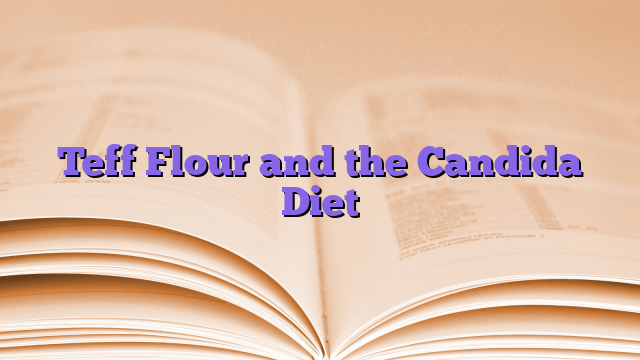
Have you ever heard of teff flour? Neither did I until I started experimenting with gluten-free flours to use on the candida diet. Teff grass, botanical name Eragrostis tef, is an ancient grain that can thrive in a variety of extreme weather conditions, making it a very reliable grain choice. Teff grass is native to Ethiopia, where it has been used as animal feed and as a component of building materials for centuries. Teff is the smallest grain in the world, but despite its small size, it is an extremely versatile grain. In Ethiopia today it is ground into flour and used to make a flatbread called injera, porridge and as an ingredient in alcoholic beverages. While teff has proven to be a reliable grain, it has remained relatively unrecognized and underutilized in North America.
Increasing awareness of conditions such as celiac disease, autism, gluten allergies/intolerances and candidiasis where eliminating gluten from the diet may be necessary or beneficial has brought non-glutinous flours such as teff to the fore in North America. As we search for alternatives to our gluten-filled staples of wheat, barley, and rye, we begin to scour the globe far and wide for useful alternatives. Using teff flour as part of your diet to treat these conditions is of particular interest as teff flour has a very impressive nutritional profile when compared to other flours, both sticky and non-sticky. Teff flour contains a large amount of bran and germ, making it an excellent source of fiber, protein, and iron. Teff is also a good source of calcium. Because teff flour is gluten-free, such a nutritional powerhouse, and contains slightly fewer carbohydrates than some other grains, it’s an ideal choice for the Candida diet, also known as the yeast-free diet.
The Candida Diet is used to treat candidiasis, which is an overgrowth of yeast in the intestinal system. For this reason, it is often referred to as the yeast-free diet, as the goal is to eliminate all foods and ingredients that contain yeast and ingredients that feed yeast in order to reduce the amount of yeast in the intestinal system. The biggest culprits tend to be sugar, processed foods, fast-acting carbohydrates, vinegar, and fermented foods. Many Candida diet resources also suggest avoiding sticky grains like wheat, rye, and barley because not only are they difficult to digest, which puts extra strain on an already weakened digestive system, but gluten can also directly contribute to the problem of yeast overgrowth feed. Symptoms of candidiasis include, but are not limited to, digestive problems, mental confusion, premenstrual syndrome, depression, eczema, and acne.
The cornerstone of treating candidiasis is the candida diet. The Candida diet is the most important part of treatment but can be the most difficult part due to the amount of food that is eliminated. Options like teff flour open up new possibilities for the candida diet. Using teff flour along with other non-sticky flours can help the candida dieter prepare a variety of yeast-free dishes. You can substitute teff flour for about a quarter of the flour called for in a recipe.
More information about living yeast free By following the candida diet you are attending a yeast free life.
Thanks to Tennille Jordan
